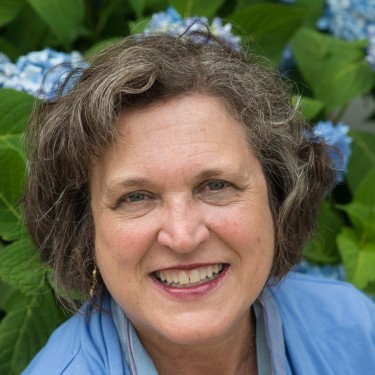
Kathryn M. Loukas, OTD, M.S., OTR/L, FAOTA
Professor Emeritus
Location
Kathryn has been an occupational therapist (OT) for over 38 years. She began her OT career working in neuro-rehabilitation and then moved on to school-based practice with children and youth. Her education, practice, service, public policy support, and research is dedicated to creating inclusive communities in schools, playgroups, outdoor activities, and transition to adult roles for children, youth, and families living with neurodevelopmental disabilities. She has served the state and national associations in various roles on executive boards and committees, the most notably serving as Speaker of the American Occupational Therapy Association’s Representative Assembly and Maine Board of Occupational Therapy Licensure. As a recipient of two distinguished teaching awards at UNE, Kate has enjoyed teaching a diverse group of courses in OT and Interprofessional education. Kathryn's seminal role as the Training Director of the Maine Leadership Education for People with Neurodevelopmental Disabilities (LEND) program has opened new doors to facilitate the occupational needs of individuals, families, and the community.
Credentials
Research
Current research
Self-organizing sensory stratgies for children and adolescents with behavior limitations to occupational participation.
Occupational therapy with adolescents in school-based practice: An inquiry of emergent roles, philosophy, and practice
Occupational therapy practice facilitates the occupational domains and life roles of individuals.
Adolescents with disabilities present with complex occupational, psychosocial, sexual, prevocational, and life skills needs as they transition into young adulthood.
School-based practice has traditionally utilized sensory-motor based frames of reference to enhance school-based performance components for children with special needs. However, the literature indicates that even with improved policy for transition planning for adolescents with disabilities, occupational therapists are not fully involved during this pivotal time. Through mixed methodology, this study will examine the roles, philosophy, and current practice of occupational therapists working with adolescents in the school-based setting.
Understanding practice is the first step toward facilitation of a paradigm shift to a holistic approach with adolescent clients.
Selected publications
Articles:
Loukas, K. M., Raymond, L., Perron, A. R., McHarg, L. A., and LaCroix Doe, T. C. (2015).
Occupational transformation: Parental influence and social cognition of young adults with
autism. Work, 50, 457–463. DOI 10.3233/WOR-141956
Loukas, K. M., Whiting, A., Ricci, E. & Cohen Konrad, S. (2012). Transdisciplinary playgroup:
Interprofessional opportunities in early intervention practice education. OT
Practice, 17(3), 8-13. Bethesda, MD: The American Occupational Therapy Association.
Raymond, L., & Loukas, K. M. (2012). Creating collaborative lifelong solutions: Person,
family, professionals, and community. The NADD Bulletin: The official publication of
the association for persons with developmental disabilities and mental health needs, 15
(1), 3-7.
Loukas, K. M. (2011). Occupational placemaking: Facilitating self organization
through use of a sensory room. Mental Health Special Interest Section Quarterly, 34(2), 1–4.
Bethesda, MD: The American Occupational Therapy Association.
Journey, B. J. & Loukas, K. M. (2009). Adolescents with disability in school-based practice:
Psychosocial intervention recommendations for a successful journey to adulthood.
Journal of Occupational Therapy, Schools, & Early Intervention, 2(2), 119-132.
Casillas, D., Davis, N. M., Loukas, K. M., & Schumacher, D. (2008). The nonlinear dynamics of
occupation: A comparative analysis of nonlinear dynamics and sensory integration.
Journal of Occupational Therapy, Schools, & Early Intervention, 1(2), 128-146.
Loukas, K. M. (2008). The Evolution of Language and Perception of Disability in
Occupational Therapy. The Education Special Interest Section Newsletter. Bethesda:
MD: The American Occupational Therapy Association.
Book chapters
Loukas, K. M. & Nagaishi, P.A. (2015). Intervention for children who are blind or who have
visual impairment. In J. Case-Smith & J. C. O’Brien (Eds.), Occupational therapy for
children and adolescents (7th edition) (pp747-765). Maryland Heights, MS; Mosby
Elsevier.
Dunn, M. L. & Loukas, K. M. (2015). Instrumental Activities of Daily Living, Driving and
Community Participation. In J. Case-Smith & J. C. O’Brien (Eds.), Occupational therapy for children
and adolescents (7th edition) (pp.461-497). Maryland Heights, MS; Mosby Elsevier.
Loukas, K. M. (2014).Occupational performance in natural environments: Dynamic contexts for
participation. In K. Jacobs, N. MacRae & K. Sladyk, (Eds.), Occupational therapy
essentials for clinical competence, (2nd ed.)(149-158). Thorofare, NJ: Slack, Inc.
Loukas, K. M. & McNeil, S. (2014). Occupation-centered functional and community mobility.
In K. Jacobs, N. MacRae, & K. Sladyk, (Eds.), Occupational therapy essentials for clinical competence,
(2nd ed.)(pp.419-438). Thorofare, NJ: Slack, Inc.
Loukas, K. M. & Journey, B. J. (2014). Interventions of play and leisure. In
K. Jacobs, N. MacRae, & K. Sladyk (Eds.), Occupational therapy essentials for clinical competence,
(2nd ed.)(pp.367-378). Thorofare, NJ: Slack, Inc.
Winston, K. & Loukas, K. M. (2014). Interventions to enhance eating, feeding, and swallowing.
In K. Jacobs, N. MacRae, & K. Sladyk (Eds.), Occupational therapy essentials for
clinical competence, (2nd ed.) (pp.457-472). Thorofare, NJ: Slack, Inc.
Research interests
Self-organizing sensory strategies for children and adolescents with behavior limitations to occupational participation.
Occupational therapy with adolescent youth in IADL and Transition to adulthood.
Occupational therapy in school-based practice; the use of inclusive techniques and natural environments in practice.